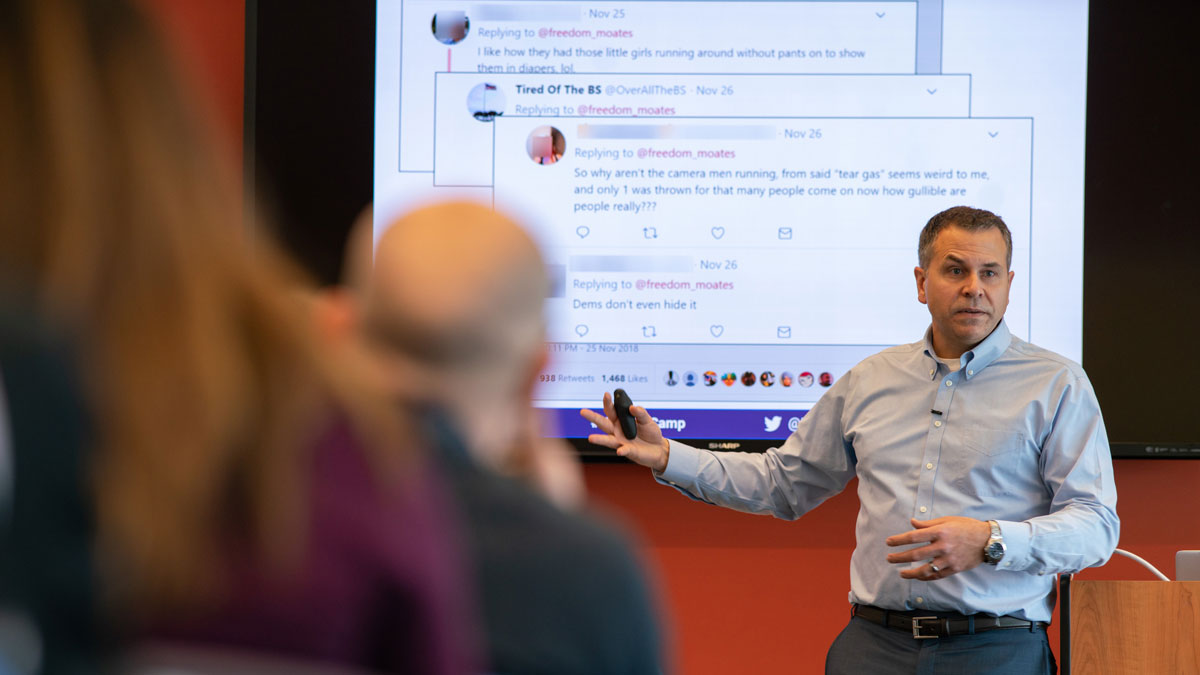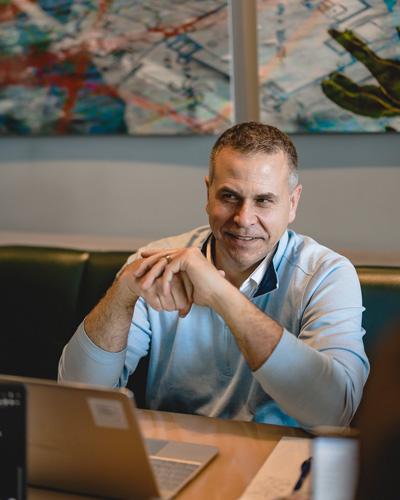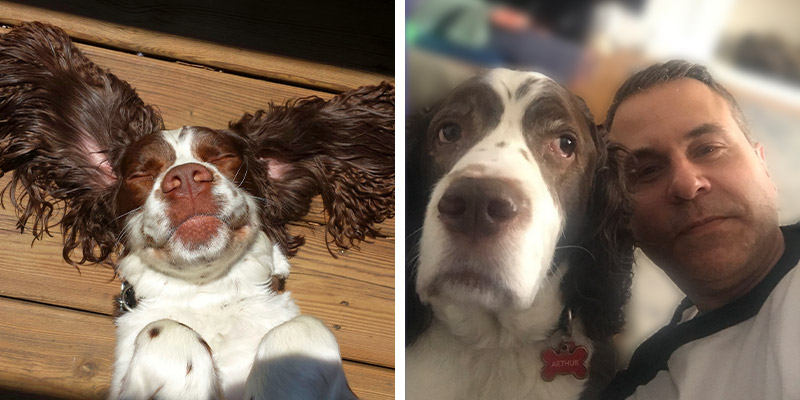
NLPeople: Peter Adams, Senior Vice President of Research and Design
Peter Adams
Chicago
1. Can you tell us a little about your background and what brought you to news literacy?

Before joining NLP, I was in education and student media. I started out as a seventh and eighth grade social studies and language arts teacher in the South Bronx in New York City. My principal asked me to bring in grant money for the school. I wrote an application for new science equipment and got it – and then wrote one to support a new student newspaper and got that too.
I had some experience co-founding and publishing an independent student newsletter in my undergrad days, so I took the lead and started the school newspaper.
Later, after going to graduate school in Chicago, I taught humanities and writing courses at two local colleges as well as a student media after-school program for high schoolers in Chicago. I was really hustling in those days … piecing together income several different ways. I loved working with my students and the freedom I had to select readings and design courses that engaged important contemporary issues. My goal was to never tell students what they should think about a given social problem or controversial issue — but rather to make sure they were informed and thinking in careful, logical and critical ways about it.
But as much as I loved this work, I needed to earn more money, so I started to look for something new and found a job listing at a new education nonprofit called the News Literacy Project. (Fun fact: my then-girlfriend, now wife, graduated from Northwestern’s Medill School with a degree in integrated marketing and communications and forwarded me the job posting.)
It was a compelling fit with my background and experience, and I could not have believed in the mission more strongly. I applied and got the job! NLP was less than a year old at the time.
I managed our classroom program in Chicago — helping teachers in middle schools and high schools all over the city integrate news literacy into their classrooms. It was also my job to recruit and prep journalist volunteers to visit NLP schools and guest teach news literacy lessons. It was not a hard sell: Journalists all over the city, from the Chicago Tribune to the Sun-Times to WBEZ to the Chicago bureau of the AP, readily agreed to volunteer. I spent a lot of time in those newsrooms and worked closely with the journalists to design and develop their lessons for students. We prepared our volunteers to go into the classroom with a learning objective and a well-designed activity so the learning was active, engaged and hands-on.
I learned so much about journalism doing this work in partnership with journalists — designing classroom activities and developing lessons with their input and driving them around from their newsrooms downtown to the schools they were visiting … and while I had them captive in my passenger seat, I would pepper them with questions about how their newsrooms operate, about journalism standards and ethics, about things they think the press could do better, and about aspects of their job that they felt were commonly misunderstood by the public. I learned a tremendous amount and continue to draw on these experiences in my role today.
2. What news literacy tip, tool or guidance do you most often use?

I guess fundamentally … trying to be mindful when I’m on social media but really paying attention to my emotions, observing the ways my personal biases are targeted and triggered and being aware of my assumptions.
I also think it’s important to consciously set aside time to seek out quality, standards-based news … not just let news find you through the algorithms that determine your social media feeds. (They don’t exist to inform the public. They exist to keep you scrolling and seeing ads.)
Finally, remembering that our experience of news is highly subjective, intermittent and incomplete. Just because you didn’t happen to see coverage of an issue or event doesn’t mean it doesn’t exist. And when you perceive bias in news you might be right — or it might be that your assessment of the coverage is biased (and other people experienced that coverage differently).
3. You joined the News Literacy Project a year after its founding in 2008. A lot has changed since then. What experience has surprised or impacted you the most?
Well, I guess I’m surprised that our work never seems to get old. The mission is too vital, and the subject matter is so dynamic that I never really feel like I’ve been at one organization for more than 15 years.
As for what has impacted me the most, without question it’s the exposure and access to standards-based newsrooms. The careful practices of verification, the values of honest inquiry, the seriousness with which things like independence, transparency and accountability are regarded … these are abstract things that are palpable when you spend any amount of time in a newsroom or talking with a journalist who is dedicated to their work. We’re always looking for ways to help teach students these same values both so they can recognize them as hallmarks of credible information sources, but also so they will internalize them as they make choices about what to publish and amplify online.
4. Aside from fighting for facts, what else are you passionate about?
Youth baseball. I started coaching when my son started playing about five years ago, and it’s just, as they say, hard not to be romantic about baseball. The history and simplicity of the sport; everything it teaches kids about character and accountability, and about dealing with adversity and accepting plain old bad luck. I also love the kids’ energy and enthusiasm, their sincerity and silliness. It’s what I miss most about teaching. Baseball is one of the only things that completely makes me stop thinking about work. There are a dozen things to think about, say and do just about every moment when you’re running a practice or coaching a game, so I don’t have any bandwidth left for thinking about viral misinformation or worrying about the disappearance of local news. Just for a bit. Long enough to help me recharge and come back to work ready to dive back in.
5. Are you on team dog, team cat, team wombat?
Team dog and it’s not even close. I grew up with Springer Spaniels, but it took me until my mid-30s to find the best one in the whole world. Or rather for him to find me. I’ve rarely been luckier.

Left, Arthur as a puppy. Right, Peter at home with the best Springer Spaniel in the world.
6. Finally, what item do you always have in your fridge?
Some leafy vegetables that are on the verge of going bad. It used to bother me if I didn’t manage to use them up but now, I understand that they’re just the inevitable net difference between the idealized Sunday optimism of the produce section and the frantic realities of the work week for busy parents.